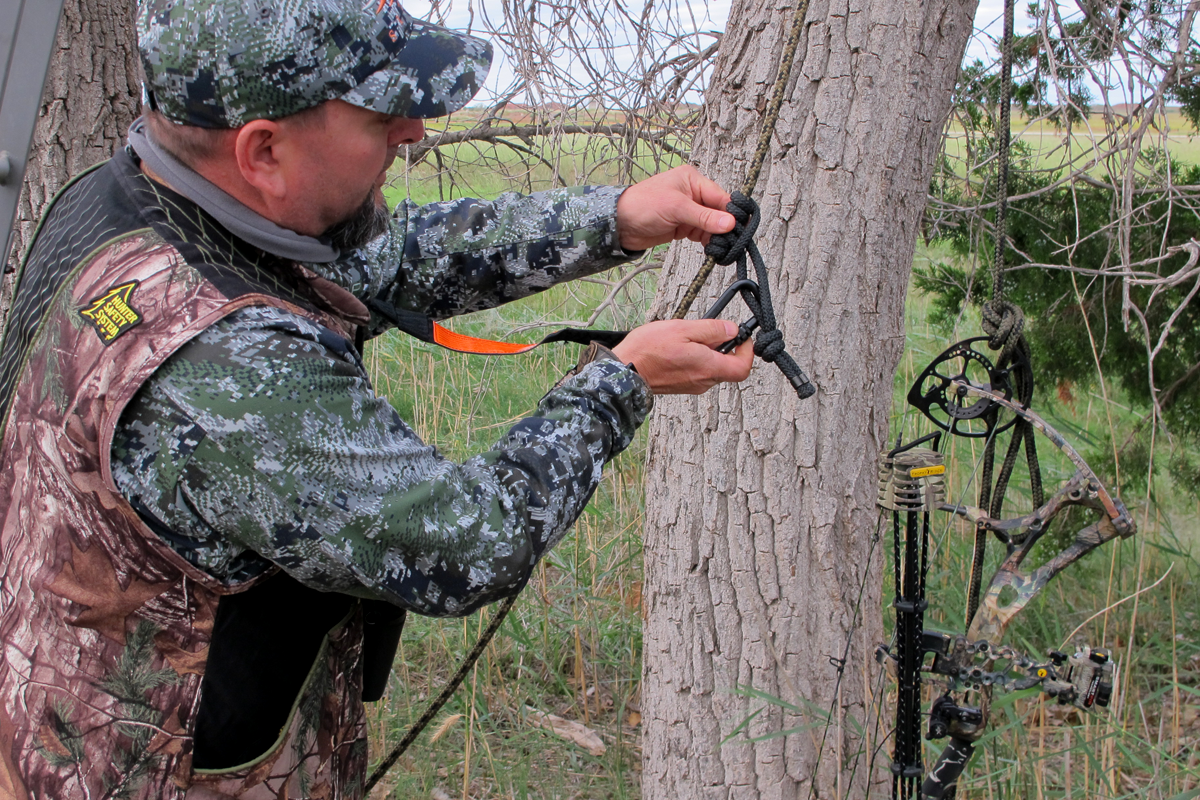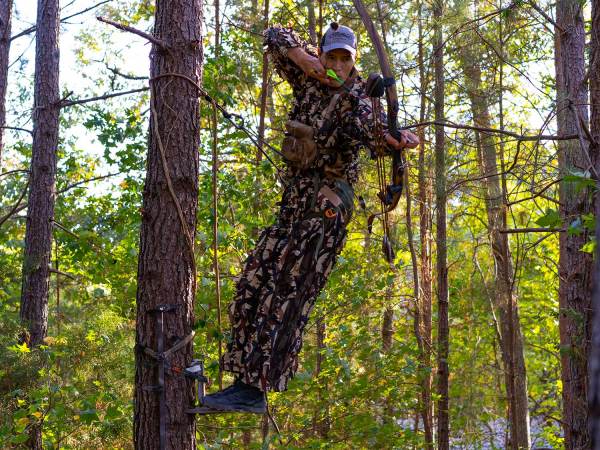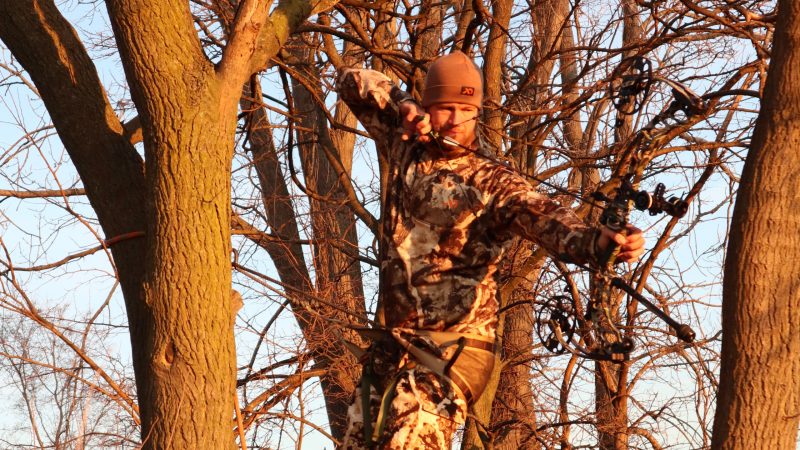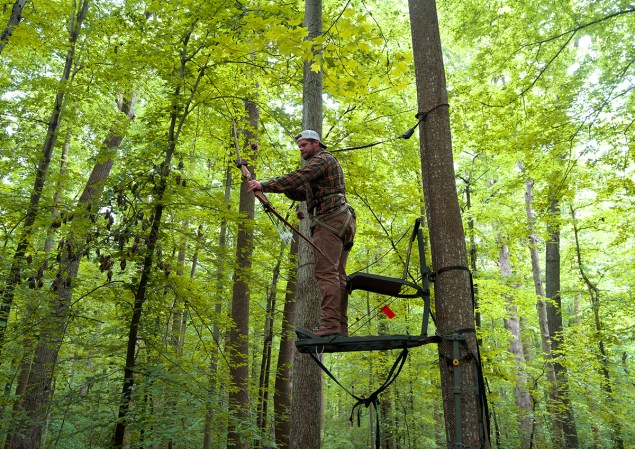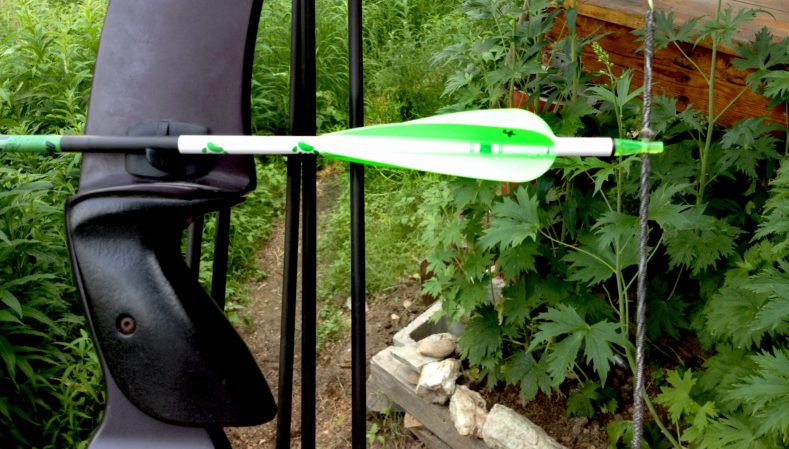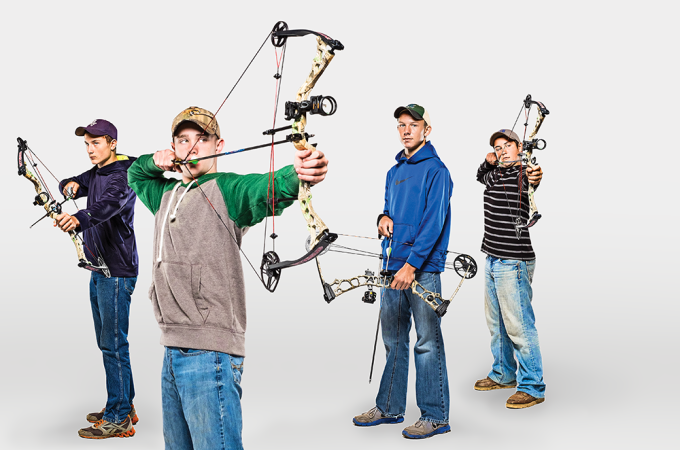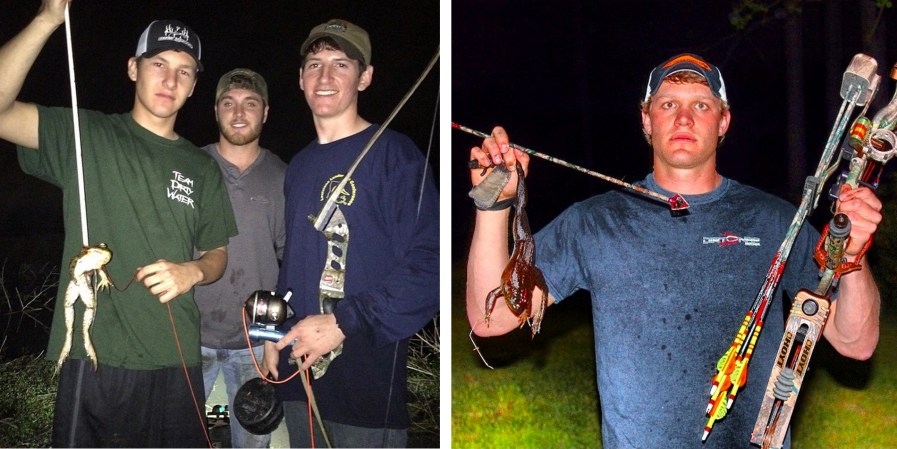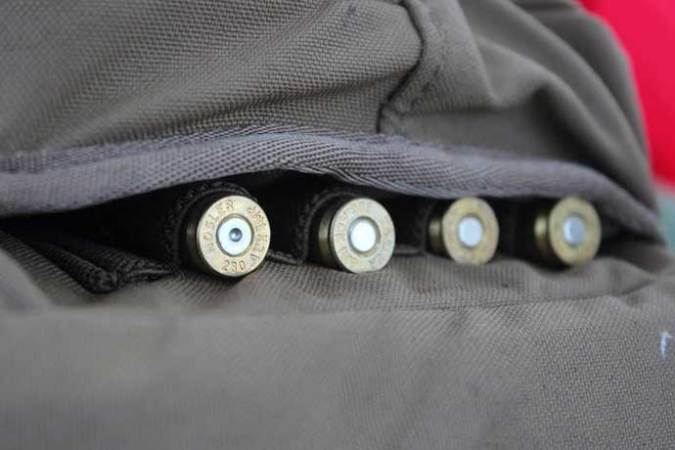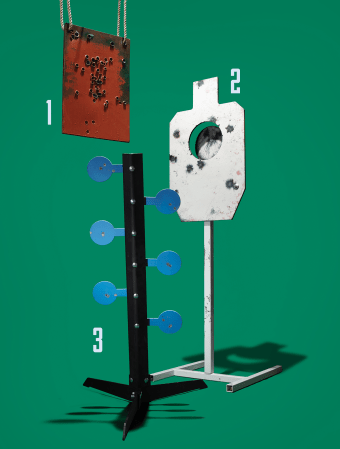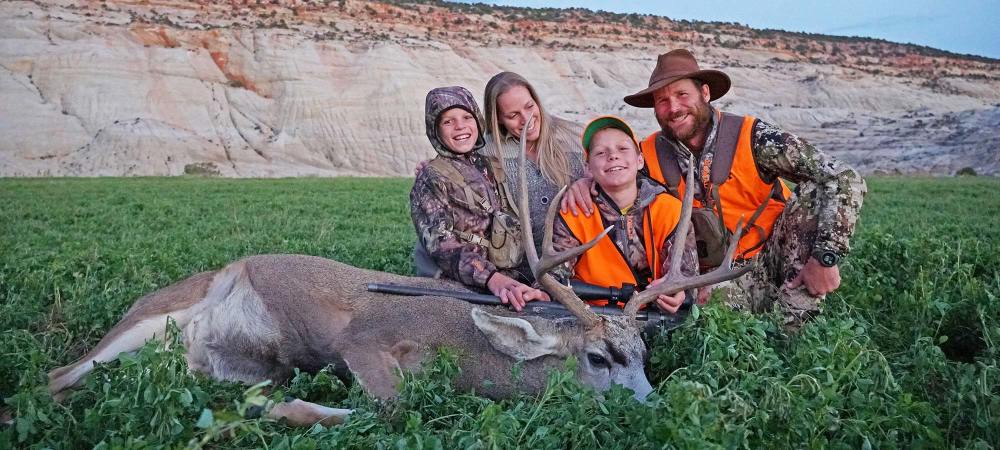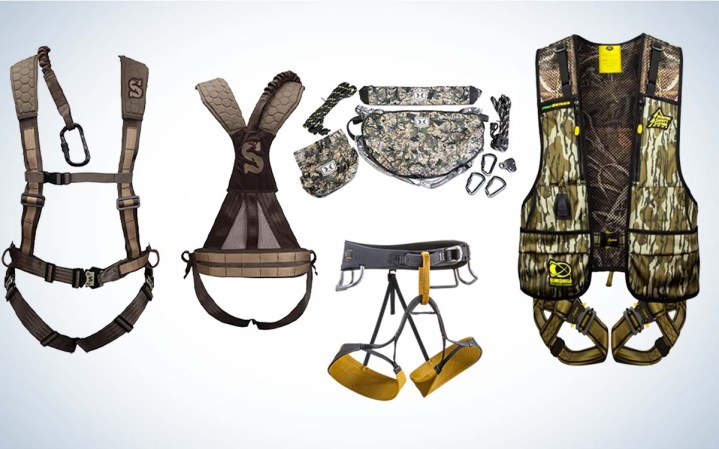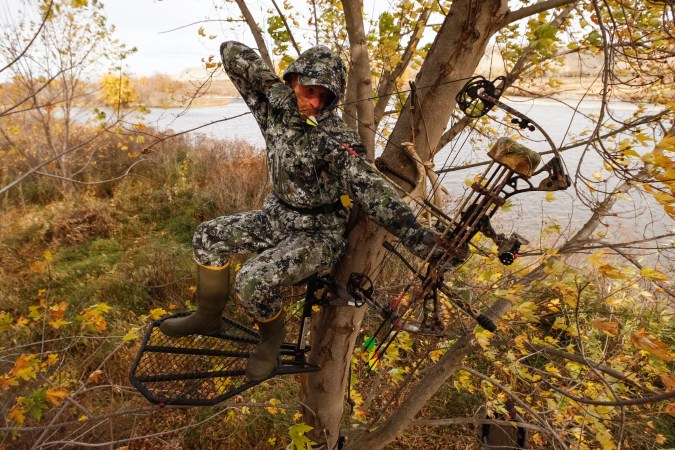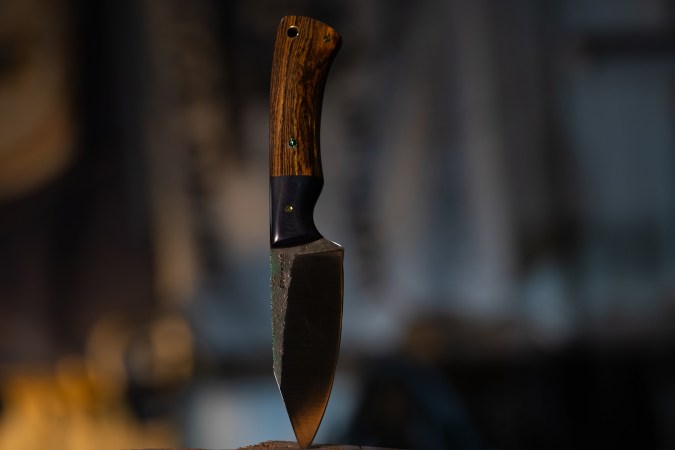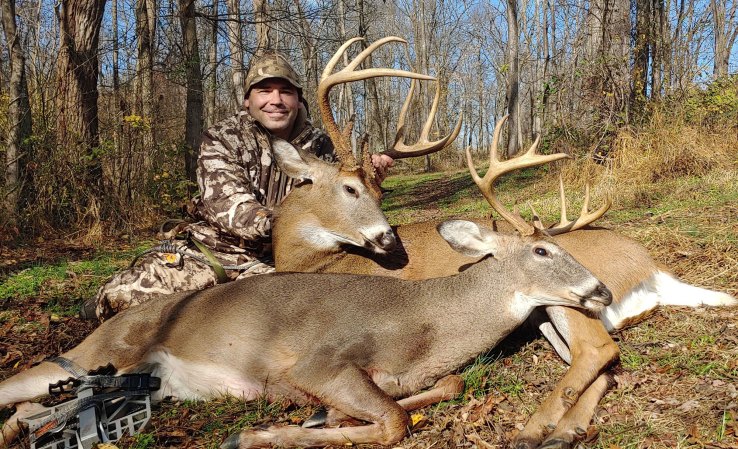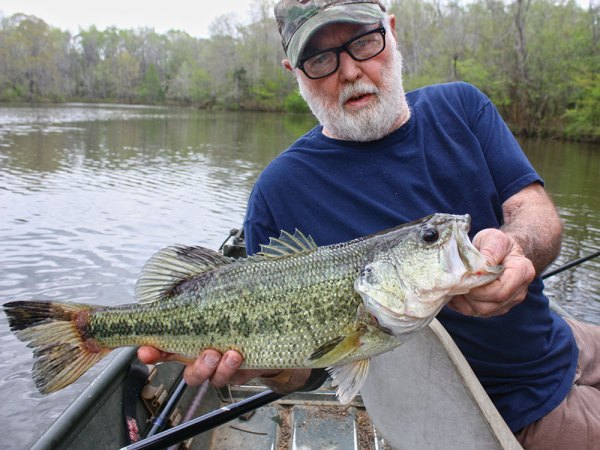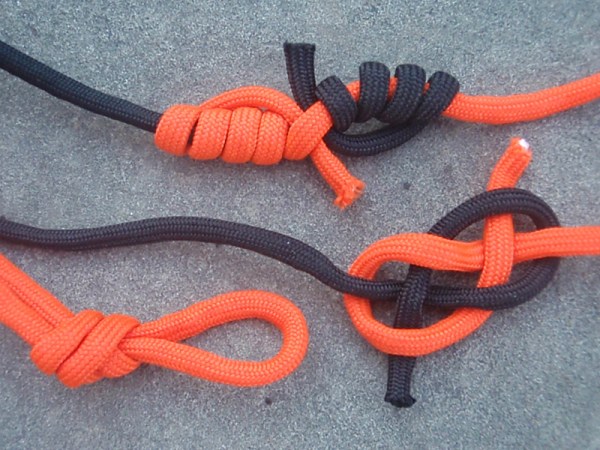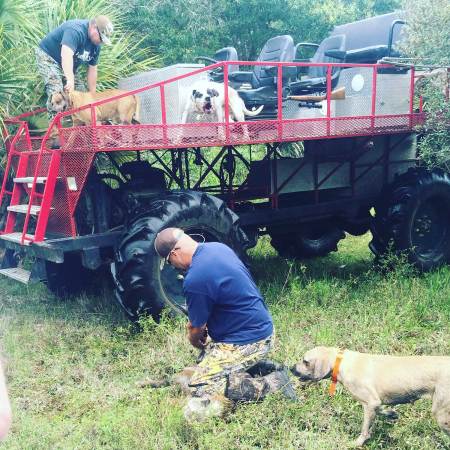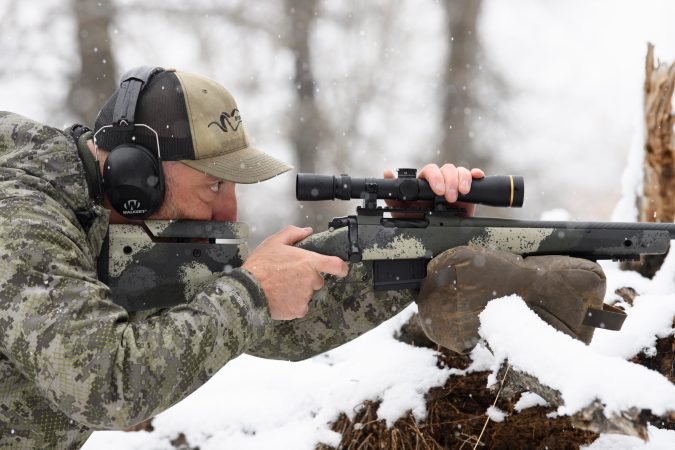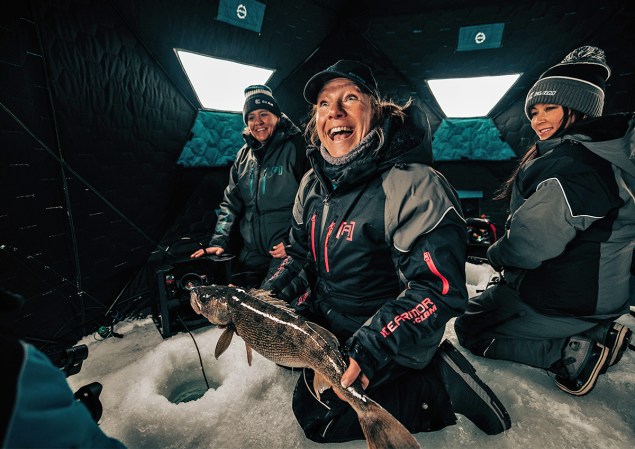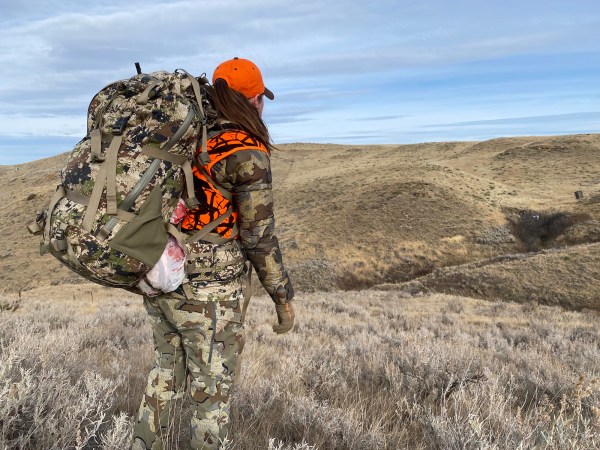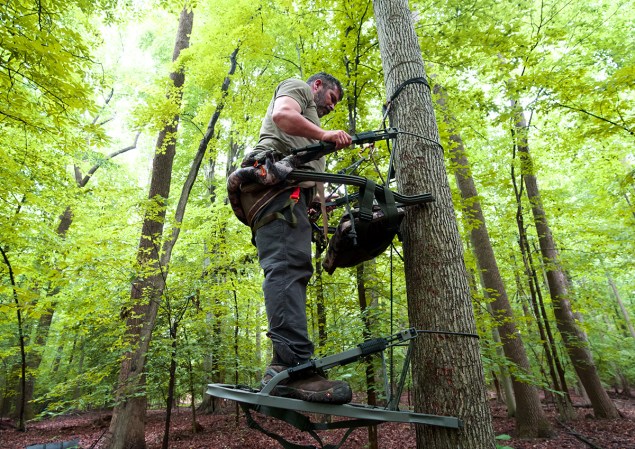We may earn revenue from the products available on this page and participate in affiliate programs. Learn More ›
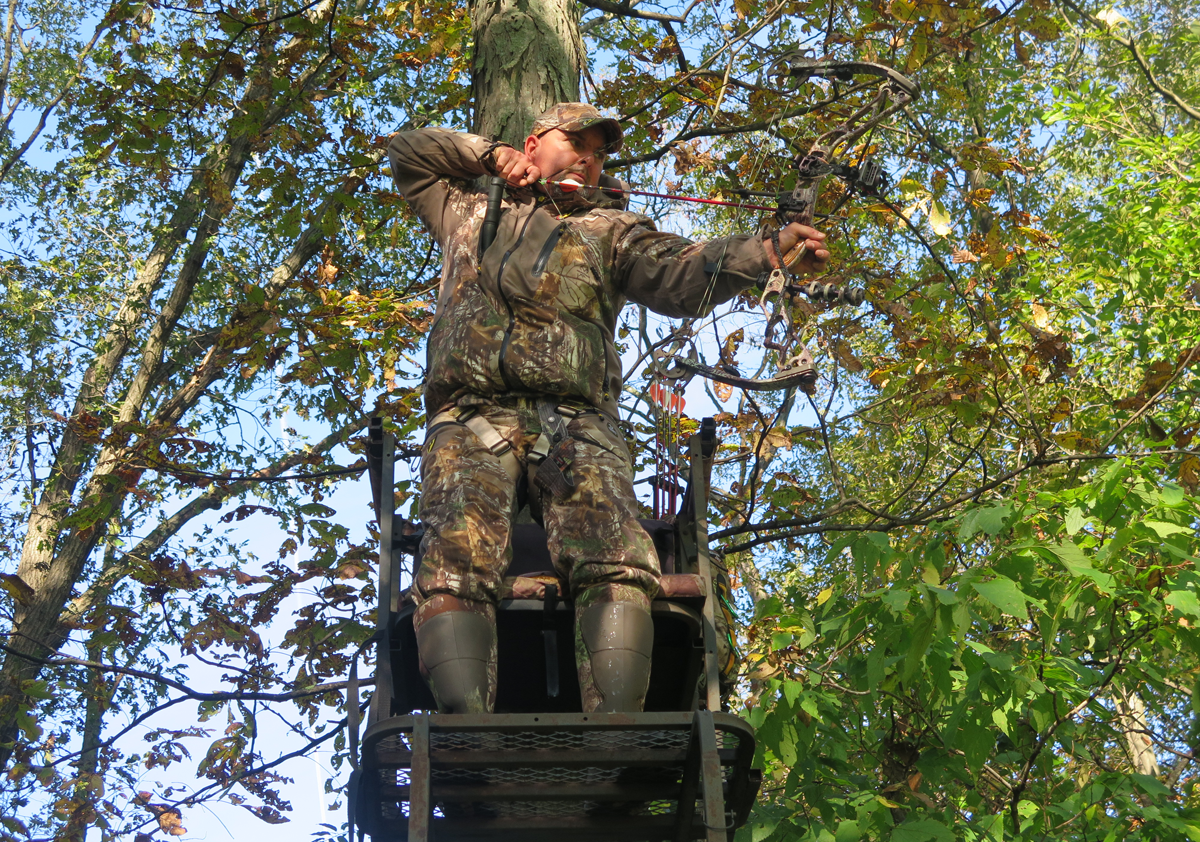
A cold, snowy January day not too long ago I ran into my longtime friend Ken—and immediately noticed the splint on his hand. He also was packing a way-too-somber demeanor. Over the next several minutes I’d planned on trading bowhunting stories and otherwise reminiscing about our recent adventures. Instead I received the chilling details of a near-tragic treestand fall.
I bring Ken’s story here to you today as a stark reminder of how suddenly things can go wrong 15 or 20 feet up a tree. Any time, any place. Even for those of us who consider ourselves hunting veterans, and have been using harnesses for years. I can’t imagine the risks for those who hunt without one. Or grasp why you wouldn’t stop such idiotic behavior immediately.
Ken’s story shook me more than most because his experience hit just a little too close to home. My friend Ken, you see, is Ken Piper, editor of Buckmasters magazine. Over the years Ken and I have shared several enjoyable hunt camps, and I can certainly vouch for his abilities with a bow. He’s a great guy, and the fact we’re both outdoor writers and happen to be the same age surely doesn’t hurt the campfire conversation. So given our spooky similarities—we’d also shared a camp just weeks before his November 2013 fall—I had to know all the details.
What I found was even more disturbing. Ken’s fall could have been mine or most anybody’s. He made some mistakes that crisp November morning, but nothing egregious. Ken also did one very right thing that day, and it almost certainly saved his life. He was wearing a Hunter Safety System harness.
Even today Ken struggles to grasp the reason for his fall.
“I had a great, peak-of-the-rut hunt set up in Illinois, the kind you wait all year for,” he told me. “When we finally left Alabama, I was certainly pumped, but we didn’t push it to get there or anything. That first day we drove about seven hours, overnighted in a hotel, and then drove four or five hours the next day.
“After arriving in Illinois we got to bed at a decent time, and the next morning the guide took me into my stand. Up I climbed some 25 feet, using screw-in steps—which always make me a little nervous—but I climbed in safely. I remember it was a beautiful but slow morning; I didn’t see one deer. The sun was shining brightly.
“I was just sitting there looking around, not even feeling tired; the next thing I know I wake up and something is wrong,” Piper recalled. “And then the tether snapped tight. I remember that loud snap. I thought, OK, I’m falling. Then I smacked into the tree pretty hard, and I’m hanging there, swinging, and I’m still thinking I’m good—that my harness just saved my life.
“Then I look and can see my hand is not right; it hurts really bad. I used my wrist to wrap around a tree step and crawled back into the stand. Then I reached over with my left hand and felt sharp bones in my right hand that were just about to poke through the skin. I started to get nauseous, and felt like I was going to pass out.”
SNUG YOUR TETHER
In retrospect, Piper acknowledges he had not attached his safety harness tether to the tree high enough. If installed correctly—above your head while standing—the tether should be slightly snug as you sit. This proper installation would not only have prevented Piper’s headfirst tumble, but it makes such drastic downward movement impossible. An even better option? Using a system that allows you and your harness to be connected to the tree from the moment you step off the ground. I’m describing the HSS Lifeline. Similar systems are offered by several other manufacturers.
After assessing his injuries up in his stand, Piper calmed himself, then slowly climbed down and waited for his guide to arrive.
“Of all things, I’d forgotten my cell phone that morning; you talk about an unfortunate situation. I always have my phone with me.
“I know I wasn’t overly tired that morning, but it seems like the older I get, the more sleepy I am,” Ken explained. “At the time I was taking some medication, and I have a little bit of sleep apnea; I was certainly jacked-up for the first day’s hunt, so maybe I didn’t get the sleep I should have. People think because we do this a little more than others that we don’t get excited, but that’s just not the case.
“My right ring finger was broken completely in two, and the piece that comes out of my knuckle was cracked. I’ve had two full-blown surgeries, and now I’ve got nine pins and a titanium brace in there, and it still doesn’t feel right. The finger is still one and a half times normal size and I cannot straighten it.
“I also caught one of the tree steps just below my left eye; a half-inch higher and I would have lost an eye,” Piper continued. “Another tree step cut my thigh.
“When people see my hand or my X-rays, they ask, ‘Weren’t you wearing a safety vest?’ Most people have no clue how violent an event that falling—even with a harness on—really is, the amount of foot-pounds of force that are in play. I thought I’d be bruised up from the harness but there was nothing.
“I just feel that I’m lucky. My fall without a harness would have been certain death…or worse. I would have landed right on my head. I just figure that the more we get this message out, the better; nobody should die because they weren’t wearing a safety harness,” Piper concluded.
This spring, when the Game Changers blog was born, our marching orders from Outdoor Life Editor Andrew McKean were clear: Deliver a steady barrage of “expert tips that will make you a better hunter.” To be honest, I don’t know if a timely reminder about treestand safety qualifies. But it just might help you accomplish something much more significant.
My hope is that someone, somewhere reading this blog will be influenced to make the smart decision to wear a quality harness—and attach it correctly—each and every time a tree is scaled. These simple steps won’t help you bag a buck, but you’ll reap a far greater benefit: Time. It’s something you can’t grill or hang on a wall. But unlike many unfortunate fall victims every season, you’ll be able to take that time—the rest of your life—to work on improving your hunt skills. And that’s a game changer in most anyone’s book.
